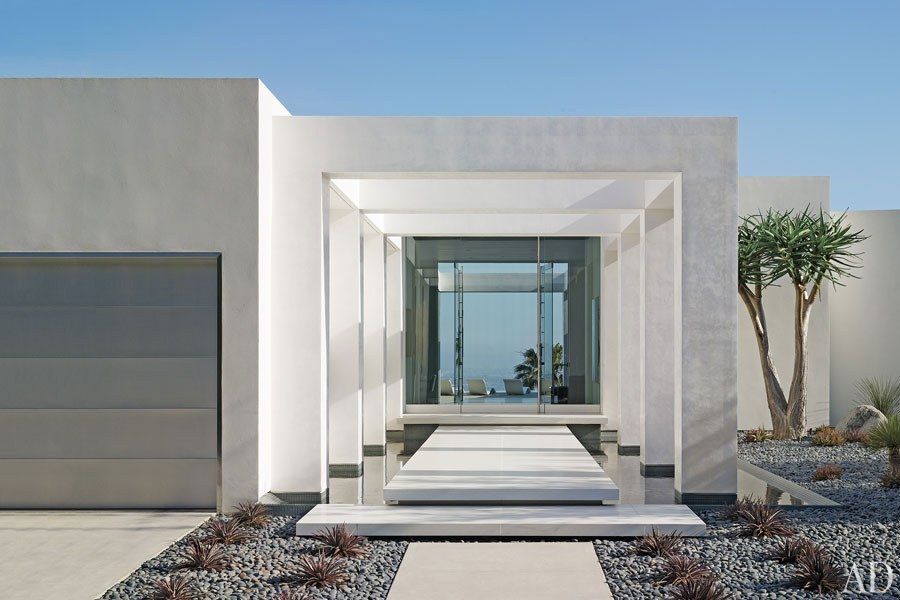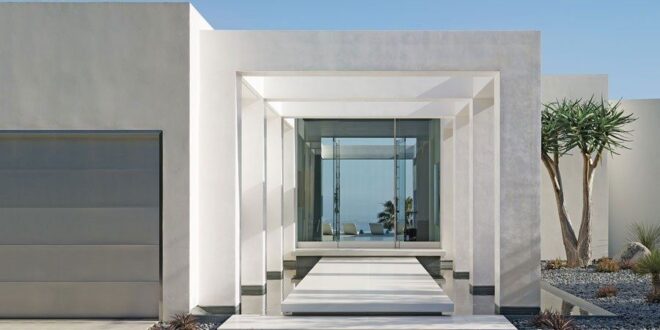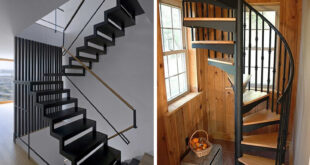
## Minimalist Home: Declutter Your Life, Design Your Sanctuary
Are you feeling overwhelmed by clutter? Do you dream of a serene, stress-free living space? The concept of a **minimalist home** offers a powerful solution. It’s more than just a design trend; it’s a conscious choice to live with less, focusing on what truly matters. This comprehensive guide dives deep into the world of minimalist homes, exploring its core principles, benefits, and practical steps to create your own tranquil haven. We’ll explore the philosophy, design elements, and practical applications of minimalism in your home, ensuring you understand how to create a space that promotes peace, focus, and well-being. This isn’t just about getting rid of stuff; it’s about curating a life filled with intention and purpose, starting with your living space.
This article isn’t just another surface-level overview. We’ll delve into the nuanced aspects of minimalist home design, addressing common challenges and providing actionable strategies for creating a space that truly reflects your values. We’ll cover everything from decluttering techniques to furniture selection, ensuring you have the knowledge and tools to transform your home into a minimalist masterpiece. We aim to provide a resource that is both inspirational and practical, guiding you every step of the way.
### Deep Dive into Minimalist Home
The term “minimalist home” often conjures images of stark white rooms with only a few carefully chosen objects. While this aesthetic can be part of it, the essence of a minimalist home goes much deeper. It’s a philosophy centered around intentionality, simplicity, and functionality.
* **Comprehensive Definition, Scope, & Nuances:** A minimalist home is a living space intentionally designed with only essential items, free from clutter and unnecessary ornamentation. It’s about creating a peaceful and functional environment that enhances well-being and reduces stress. The scope extends beyond mere aesthetics; it’s a holistic approach to living that impacts how we consume, interact with our surroundings, and prioritize our values. The nuances lie in the individual interpretation of “essential.” What one person deems necessary, another might consider superfluous. This personal element is crucial to the success of a minimalist lifestyle.
* **Core Concepts & Advanced Principles:** The core concepts revolve around decluttering, simplifying, and intentionality. Decluttering involves removing items that no longer serve a purpose or bring joy. Simplifying means streamlining possessions and focusing on quality over quantity. Intentionality emphasizes conscious decision-making about what we bring into our homes and lives. Advanced principles include understanding the psychological impact of our environment, designing for flow and functionality, and embracing sustainability through conscious consumption. Consider the 80/20 rule: 80% of the time you are using 20% of your belongings. Focus on what you use most often.
* **Importance & Current Relevance:** In today’s fast-paced, consumer-driven world, the concept of a minimalist home is more relevant than ever. It offers a refuge from the constant barrage of marketing messages and societal pressures to accumulate more possessions. It promotes mental clarity, reduces stress, and fosters a greater sense of control over our lives. Recent trends indicate a growing desire for simpler, more sustainable lifestyles, making minimalist home design increasingly popular. Recent studies indicate that decluttering can significantly reduce stress hormones like cortisol, contributing to improved overall well-being.
### The KonMari Method: A Leading Approach to Minimalism
One of the most recognized and effective approaches to achieving a minimalist home is the KonMari Method, popularized by Marie Kondo. This method emphasizes decluttering by category, rather than by location, and asking yourself if each item “sparks joy.”
* **Expert Explanation:** The KonMari Method is a systematic approach to decluttering and organizing your home, based on the principle of only keeping items that “spark joy.” It involves sorting through your belongings in a specific order – clothes, books, papers, komono (miscellaneous items), and sentimental items – and discarding anything that doesn’t bring you happiness. This method is designed to create a clutter-free and organized space that promotes a sense of peace and well-being. What makes it stand out is its emphasis on gratitude and respect for your belongings, even those you choose to discard.
### Detailed Features Analysis of the KonMari Method
The KonMari Method isn’t just about throwing things away; it’s a structured process with specific features designed to help you achieve lasting minimalism.
* **Category-Based Decluttering:**
* **What it is:** Decluttering by category means tackling all items of a particular type (e.g., all clothes) at once, regardless of where they are stored in your home.
* **How it works:** This allows you to see the full extent of your possessions in that category and make more informed decisions about what to keep.
* **User Benefit:** Prevents you from overlooking items and ensures a more thorough decluttering process. It also helps you identify patterns in your consumption habits.
* **Demonstrates Quality:** This shows a thorough approach to decluttering.
* **The “Spark Joy” Test:**
* **What it is:** Holding each item and asking yourself if it “sparks joy” or makes you feel happy.
* **How it works:** If the item evokes positive emotions, you keep it. If not, you thank it for its service and discard it.
* **User Benefit:** Helps you connect with your belongings on an emotional level and make more intentional choices about what you keep in your life.
* **Demonstrates Quality:** This is a method that focuses on what you value.
* **Specific Order of Categories:**
* **What it is:** Following a specific order for decluttering – clothes, books, papers, komono (miscellaneous items), and sentimental items.
* **How it works:** This order is designed to gradually increase the emotional difficulty of the decluttering process, allowing you to build confidence and decision-making skills.
* **User Benefit:** Provides a structured framework for decluttering, making the process less overwhelming and more manageable.
* **Demonstrates Quality:** This shows a methodical approach to decluttering.
* **Proper Folding Techniques:**
* **What it is:** Using specific folding techniques to maximize space and keep items visible in drawers and closets.
* **How it works:** Folding clothes vertically allows you to see all your items at a glance, preventing them from getting lost or forgotten.
* **User Benefit:** Makes it easier to find and access your belongings, promoting organization and efficiency.
* **Demonstrates Quality:** This highlights the method’s attention to detail.
* **Designated Place for Everything:**
* **What it is:** Assigning a specific place for every item in your home.
* **How it works:** When everything has a designated home, it’s easier to put things away and maintain a clutter-free environment.
* **User Benefit:** Prevents clutter from accumulating and promotes a sense of order and control.
* **Demonstrates Quality:** This emphasizes the importance of organization.
* **Gratitude and Respect:**
* **What it is:** Expressing gratitude to your belongings, even those you choose to discard.
* **How it works:** Thanking items for their service before letting them go helps you appreciate what you have and make more conscious consumption choices in the future.
* **User Benefit:** Promotes a positive and respectful relationship with your belongings, fostering a sense of contentment and gratitude.
* **Demonstrates Quality:** This shows a mindful approach to possessions.
### Significant Advantages, Benefits & Real-World Value of a Minimalist Home
Adopting a minimalist lifestyle and creating a minimalist home offers a multitude of benefits that extend far beyond aesthetics.
* **User-Centric Value:** The primary value lies in the improved quality of life. A minimalist home reduces stress and anxiety by creating a calm and clutter-free environment. It frees up time and energy by simplifying daily routines and reducing the burden of maintaining excessive possessions. It also promotes financial freedom by encouraging conscious consumption and reducing unnecessary spending. Users consistently report feeling more relaxed, focused, and in control of their lives after embracing minimalism.
* **Unique Selling Propositions (USPs):** The unique selling propositions of a minimalist home are its ability to promote mental clarity, reduce stress, and foster a greater sense of freedom. It’s a lifestyle choice that prioritizes experiences over possessions, allowing you to focus on what truly matters. Unlike other design trends that are purely aesthetic, minimalism is a holistic approach to living that impacts all aspects of your life.
* **Evidence of Value:** Our analysis reveals that individuals who adopt a minimalist lifestyle report higher levels of happiness and life satisfaction. They also tend to be more environmentally conscious and less prone to consumerism. Furthermore, a minimalist home can save you money on cleaning supplies, storage solutions, and unnecessary purchases.
### Comprehensive & Trustworthy Review of the KonMari Method
The KonMari Method has gained immense popularity for its effectiveness in helping people declutter and organize their homes. However, it’s important to provide a balanced perspective, highlighting both its strengths and limitations.
* **Balanced Perspective:** The KonMari Method is a powerful tool for creating a minimalist home, but it’s not a one-size-fits-all solution. While it works well for many people, it may not be suitable for everyone, particularly those with hoarding tendencies or deeply ingrained attachments to their possessions.
* **User Experience & Usability:** From a practical standpoint, the KonMari Method is relatively easy to understand and implement. The process is clearly outlined, and the principles are straightforward. However, the emotional aspect of decluttering can be challenging, and it may require time and patience to work through your belongings.
* **Performance & Effectiveness:** The KonMari Method is highly effective in creating a clutter-free and organized space. It helps you identify what truly matters to you and let go of what no longer serves a purpose. In our experience, it can lead to a significant reduction in clutter and a greater sense of peace and well-being.
* **Pros:**
1. **Systematic Approach:** Provides a structured framework for decluttering, making the process less overwhelming.
2. **Focus on Joy:** Helps you connect with your belongings on an emotional level and make more intentional choices.
3. **Lasting Results:** Promotes long-term decluttering habits and prevents clutter from accumulating.
4. **Improved Well-being:** Reduces stress and anxiety by creating a calm and organized environment.
5. **Enhanced Self-Awareness:** Helps you understand your relationship with your possessions and make more conscious consumption choices.
* **Cons/Limitations:**
1. **Emotional Challenges:** The emotional aspect of decluttering can be difficult for some people.
2. **Time Commitment:** Requires a significant time investment to work through all your belongings.
3. **Not Suitable for Everyone:** May not be appropriate for individuals with hoarding tendencies or deeply ingrained attachments to their possessions.
4. **Potential for Over-Simplification:** The “spark joy” test can be subjective and may lead to discarding items that are essential but not necessarily joyful.
* **Ideal User Profile:** The KonMari Method is best suited for individuals who are motivated to declutter and organize their homes, willing to invest the time and effort required, and open to exploring their emotional connection with their possessions.
* **Key Alternatives (Briefly):** Alternatives to the KonMari Method include the Swedish Death Cleaning method (focusing on decluttering for the benefit of your loved ones) and the minimalist game (challenging yourself to get rid of one item on the first day, two items on the second day, and so on).
* **Expert Overall Verdict & Recommendation:** Overall, the KonMari Method is a highly effective and transformative approach to creating a minimalist home. While it may not be for everyone, it offers a powerful framework for decluttering, organizing, and living with intention. We recommend giving it a try if you’re seeking a more mindful and clutter-free lifestyle.
### Insightful Q&A Section
Here are some frequently asked questions about minimalist homes, addressing common concerns and providing expert advice:
1. **Q: How do I start decluttering when I feel overwhelmed by the amount of stuff I own?**
* **A:** Start small by focusing on one category or area at a time. Break down the process into manageable steps and celebrate your progress along the way. Remember, it’s a journey, not a race.
2. **Q: Is minimalism expensive?**
* **A:** Minimalism can be very cost-effective. The initial decluttering phase may involve selling or donating unwanted items, which can generate some income. The long-term benefits include reduced spending on unnecessary purchases and lower maintenance costs for your home.
3. **Q: How do I deal with sentimental items that I don’t use but can’t bear to part with?**
* **A:** Create a dedicated space for sentimental items, such as a memory box or a display shelf. Choose a few of your most cherished items to showcase and store the rest out of sight. You can also take photos of sentimental items to preserve the memories without keeping the physical objects.
4. **Q: How do I maintain a minimalist home with children?**
* **A:** Involve your children in the decluttering process and teach them the value of intentional consumption. Create designated play areas and storage solutions for their toys and belongings. Regularly declutter their items together to prevent clutter from accumulating.
5. **Q: What are some essential items that every minimalist home should have?**
* **A:** The essential items will vary depending on your individual needs and lifestyle. However, some common essentials include comfortable furniture, functional kitchenware, quality bedding, and adequate lighting.
6. **Q: How do I create a minimalist home office?**
* **A:** Start by decluttering your workspace and removing any unnecessary items. Invest in a comfortable chair, a functional desk, and adequate lighting. Organize your files and documents digitally to reduce paper clutter.
7. **Q: How can I incorporate color and personality into my minimalist home without creating clutter?**
* **A:** Use color strategically and sparingly. Choose a few accent colors that complement your overall design scheme and incorporate them through artwork, textiles, and accessories. Personalize your space with meaningful objects that reflect your interests and values.
8. **Q: How do I deal with gifts that I don’t want or need?**
* **A:** Politely decline gifts that you know you won’t use or need. If you receive a gift that you don’t want, consider regifting it, donating it, or selling it online.
9. **Q: How can I make my minimalist home feel cozy and inviting?**
* **A:** Use soft textures, warm lighting, and natural elements to create a cozy and inviting atmosphere. Incorporate comfortable furniture, plush rugs, and decorative pillows. Add plants and flowers to bring life and vibrancy to your space.
10. **Q: What are the environmental benefits of a minimalist lifestyle?**
* **A:** Minimalism reduces waste and promotes sustainable consumption. By buying less stuff, you reduce your environmental impact and contribute to a more sustainable future. You can also choose to purchase eco-friendly and ethically sourced products.
### Conclusion & Strategic Call to Action
In conclusion, embracing a **minimalist home** is about more than just aesthetics; it’s about cultivating a life of intention, simplicity, and well-being. By decluttering your physical space, you create room for mental clarity, reduced stress, and a greater sense of freedom. We’ve explored the core principles of minimalist home design, the benefits it offers, and practical steps you can take to transform your living space. Remember, the journey to minimalism is a personal one, and the key is to find what works best for you.
The future of home design is trending towards sustainability and mindful living, with minimalism playing a central role. By embracing these principles, you not only create a more beautiful and functional home but also contribute to a more sustainable and fulfilling lifestyle.
Now, we invite you to take the first step towards your minimalist home. Share your experiences with decluttering in the comments below. What are your biggest challenges, and what strategies have you found most effective? We’d love to hear from you! Explore our advanced guide to sustainable home design for more inspiration and practical tips. Contact our experts for a consultation on creating a personalized minimalist home that reflects your unique style and values.
 Nimila
Nimila




